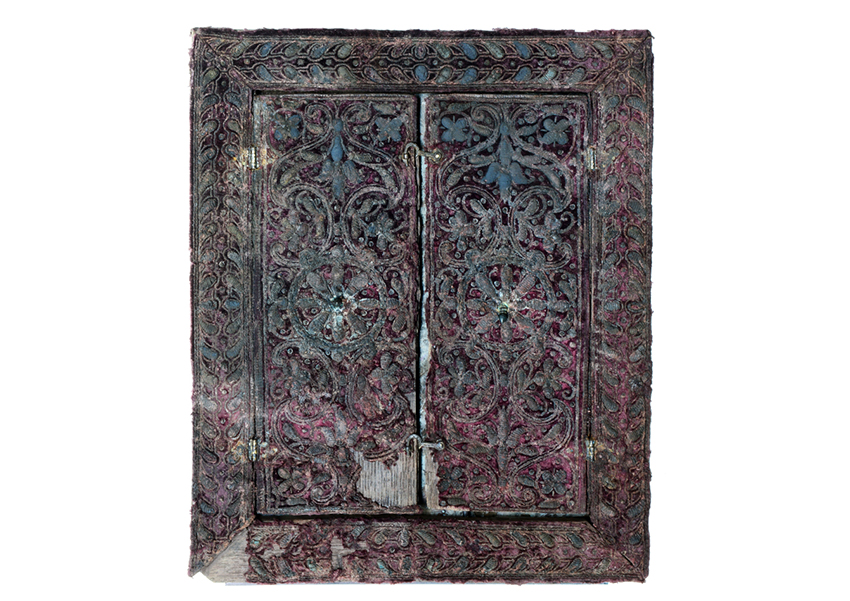 Amongst the textile finds from the Palmwood Wreck are a number of objects which would have belonged on the dressing table of a very affluent lady. This was probably a complete toiletry set. The centrepiece of these finds is a beautiful table mirror. The finely restored mirror has two doors and is lined with silk velvet and metallic embroidery.
Amongst the textile finds from the Palmwood Wreck are a number of objects which would have belonged on the dressing table of a very affluent lady. This was probably a complete toiletry set. The centrepiece of these finds is a beautiful table mirror. The finely restored mirror has two doors and is lined with silk velvet and metallic embroidery.
Various parts
The toiletry set also includes a case containing a comb, a silk-coated brush and a cloth which was probably once part of a pin cushion. A pin cushion was an unmissable part of such a set, as many parts of a costume, such as the sleeves, were separate pieces. These were fastened together whilst dressing. A table runner has also been identified. This one was red but that was not the case with all table runners. The name ‘toiletry set’ originates from the expensive cloth which lay on the dressing table and upon which the various articles were displayed. It was usually a white lace cloth, known as a ‘toilette’.
Metallic embroidery
Various techniques were used for the embroidery on the toiletry set. There are decorations made of spirally wound metallic threads, combined with cut strips of foil and crushed discs wound around material. The decorations appear to mainly have been made of silver. Traces of gold however suggest that the silver was partly, or possibly completely, gilded.
Matching
The decorations on the various parts of the toiletry set are similar in appearance but the patterns are not exactly the same. It seems very likely that the articles belonged together – although it was also common practice for a toiletry set to consist of diverse objects by different makers. A few articles are probably still missing. Altogether, the objects conjure up a very clear image of a dressing table in the private quarters of a very affluent lady from the first half of the seventeenth century. Out of sight of others, this lady would be dressed and groomed at her dressing table by her maid servant.
On display
The toiletry set and other unique finds from the Palmwood wreck are on display in a new, spectacular exhibition at Museum Kaap Skil.
NB: Research continues to be conducted into the collection. For this reason, this article may contain obsolete information or outdated insights.



